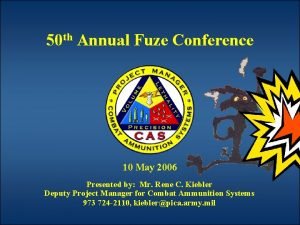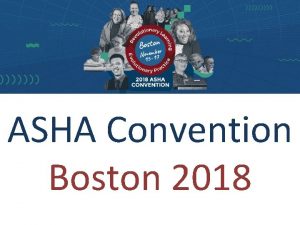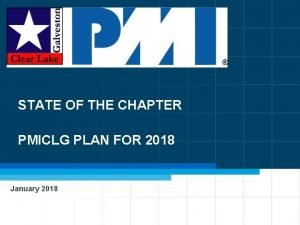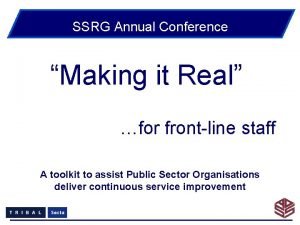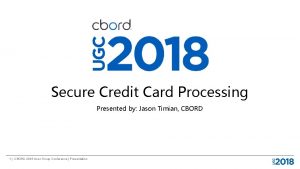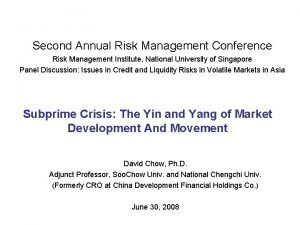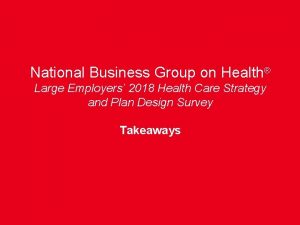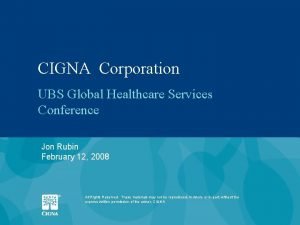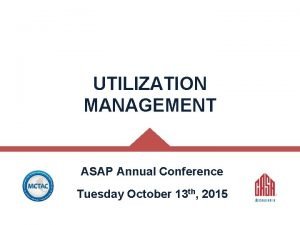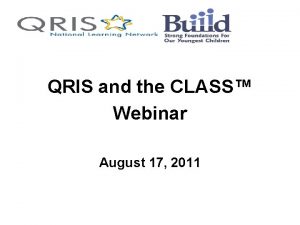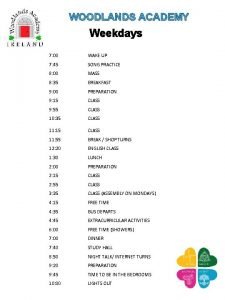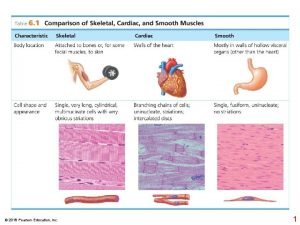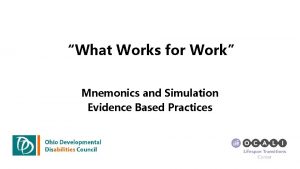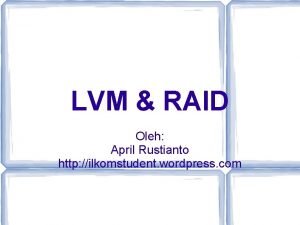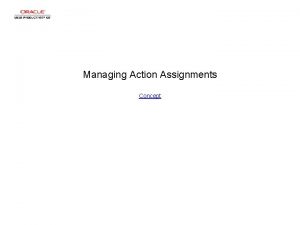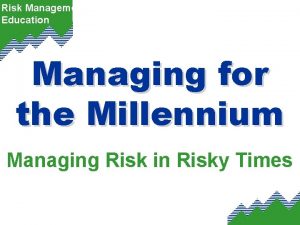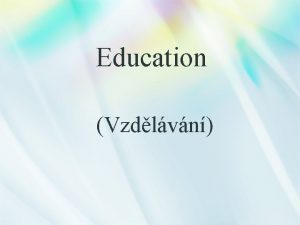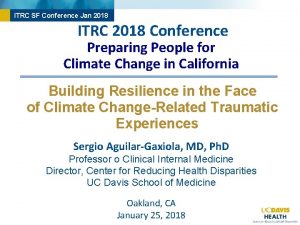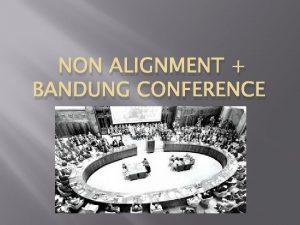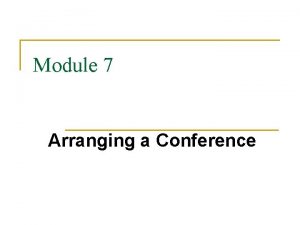IAMSS 2018 Education Conference April 12 2018 Managing







































- Slides: 39

IAMSS 2018 Education Conference April 12, 2018 Managing Temporary/Locum Tenens Privileges to Mitigate Risk and Protect Patients By: Carol Cairns, CPMSM, CPCS

What is potentially the highest-risk procedure done in a hospital? n Need some hints about the procedure? n n n It has the potential to affect one to hundreds of patients each time it is performed It may cost the organization thousands or even millions of dollars if not done well It is generally considered an “emergency” and thus disruptive to the schedules of all involved It does not involve a scalpel It is done in the majority of the nation’s hospitals (in some facilities, every month if not weekly)

The answer? n Granting of temporary privileges!

What’s the issue? n Potential n n n for high risk Patient care Regulatory and accreditation compliance Legal

Case Study # 1 The Emergency Application

Audience input n What advice should the credentials committee chair give? n What should the credentials committee chair do?

What do the regulators & accreditors require? n CMS is silent on the granting of temporary privileges n n CMS verbal interpretation: No abbreviation for privileging process. Organization must follow the MS bylaws. Historically, CMS has allowed organizations to grant temporary privileges

The Joint Commission requirements n Temporary privileges may be granted by CEO (or designee) under two circumstances n To fulfill an important patient care, treatment, and service need n n n Time period defined in MS bylaws Required verification of licensure and competence Applicant for new privileges with a complete application that raises no concerns is awaiting approval by MEC and the governing body n n No longer than 120 days All verification completed

HFAP requirements • MS bylaws provide for granting temporary privileges – – • During review and consideration of a completed application awaiting MEC and action by Board For care of specific patient(s) For locum tenens For times of emergency and/or disaster Time limited temporary privileges are granted in accordance with State law by the CEO/designee – – When sufficient evidence exists that granting temporary privileges is prudent Upon recommendation of chair of department/service

HFAP requirements – cont’d n When granting temporary privileges for care of specific patient(s) or to locum tenens, minimal verification required n n Licensure DEA certificate Insurance At least one recent reference from a previous hospital, chief or department chair

DNV requirements n Temporary privileges may be granted by CEO (or designee) n For an urgent patient care need or when an application is complete without any negative or adverse information a completed application before action by MS or governing body n n Upon recommendation of MEC member, MS president, or medical director (as defined by MS) Not to exceed 120 days

DNV requirements – cont’d n Criteria for granting temporary privileges n n n Verification of education (AMA/AOA Profile is acceptable) Demonstration of current competence Primary verification of state professional licenses Receipt of professional references (including current competence) Receipt of database profiles from AMA, AOA, NPDB, and OIG Medicare/Medicaid Exclusions

Reasons for overuse or abuse of temporary privileges n n n Challenging recruitment and retention environment Political motivation to expedite an application or ignore yellow or red flags Lack of commitment to a quality process or lack of understanding of the associated risk with a circumvented process Increase of employed practitioners Lack of planning or understanding of effective alternatives

What actions can reduce risk and help protect patients? n Consider: n n Defining eligible practitioners Creating a priority system (i. e. , “mission critical” applicants)

What can be done to reduce risk and protect patients? – cont’d n Consider: n n Establish minimum processing time and notify all stakeholders Collaborate with recruiter n n n Educate re: credentialing procedures Eliminate any duplicative processes Agree on realistic expectations Establish ongoing communication practices Orient new MS leaders to policy

What actions can reduce risk and help protect patients? n Define and create buy-in to “patient care need” n n n Patient Hospital Community

Defining “patient care need” n Patient(s) n Clinical needs will not be adequately met if the temporary privileges under consideration are not granted, (e. g. , a patient scheduled for urgent surgery would not be able to undergo the surgery in a timely manner)

Defining “patient care need” (cont’d) n Hospital n Cannot adequately meet the needs of patients who seek care (e. g. , emergency room coverage in the practitioner’s specialty, precepting for new technology, the termination of an exclusive contract or an individual employment contract)

Defining “patient care need” (cont’d) n Community n The community is at risk of not receiving appropriate patient care (e. g. , a physician has a large practice in the community, and adequate coverage of hospital care for his/her patients cannot otherwise be arranged)

Recommendations n Assess current MS bylaws language re: temporary privileges n n Ensure bylaws adequately address granting temporary privileges for patient care need and pendency of application Does it include locum tenens? . . . Use expedited governing body approval process n Evaluate committee cycle n Evaluate opportunities to decrease TAT n

Case Study # 2 Yet another locum tenens application?

What should Ima do to prepare for this meeting?

Let’s see what the regulators and accreditors say. . .

Locum tenens practitioners n CMS and TJC do not have standards or interpretations related to credentialing or privileging of locum tenens practitioners

HFAP Requirements n MS bylaws allow temporary privileges to be granted to locum tenens n n Same process as outlined in previous slides re: temporary privileges Privileges may be granted for specific periods of time which are not sequential

DNV requirements n MS bylaws define process for use of locum tenens or similar temporary medical service including n n n The requirements for credentialing and privileging The process for approval of physicians and other practitioners Privileges may not exceed six months

What are your reasons for granting locum tenens privileges? n Assess current MS bylaws language re: locum tenens & temporary privileges n n If bylaws are silent on locum tenens, assure bylaws adequately address granting temporary privileges for patient care need and pendency of application. If necessary, apply the temporary privilege language to each request for locum tenens practitioner

What are your reasons for granting locum tenens privileges? (cont’d) n If bylaws do provide for locum tenens privileging, determine if a “lesser” vs. equivalent credentialing process is outlined. If so, evaluate if the process creates two standards of care—thus potentially compromising quality and patient safety.

What are the reasons for granting locum tenens privileges? (cont’d) n Evaluate current circumstances of granting locum tenens privileges and define reasons n n Chronic staff shortages? Continuity of patient care—substitute for current staff in their absence? Competition? Office practice versus hospital practice?

“All things should be made as simple as possible, but not more so. ” —Albert Einstein

Recommendations n Be proactive—not reactive in managing the use of locum tenens practitioners n n Reduce or eliminate the use of locum tenens practitioners to the extent possible Identify circumstances that may require coverage, i. e. , single practitioner in specialty n n Encourage staff member to seek long term coverage Request practitioner to apply for privileges (without membership)

Recommendations (cont’d) n Create a preferred relationship with locum agency/agencies n n Develop agreement(s) to share appropriate credentialing verification information obtained by agency including negative evaluations Complete an evaluation and share with the locum tenens agency

Recommendations (cont’d) n Identify methods to streamline processes and reduce delays without compromising outcome n Minimize repeated episodic privileging of “tried and true” locum tenens

Recommendations (cont’d) n Assess current MS bylaws language re: locum tenens & temporary privileges n n n Caution: If bylaws do provide for locum tenens privileging, determine whether a “lesser” vs. equivalent credentialing process is outlined Evaluate whether the process creates two standards of care—thus potentially compromising quality and patient safety Locum tenens staff category is not necessary

Recommendations (cont’d) n Determine whether your hospital can eliminate MS bylaws language re: locum tenens by applying the temporary privilege language to each request for locum tenens n n Patient care need Pendency of application

Most importantly. . . n To ensure patient safety, reduce the incidence of granting any privileges without satisfying all components of the credentialing process

Questions?

Now it is time to stop working and smell the flowers!

Just in case you need a few more flowers. . . !
 Gartner bi event
Gartner bi event Annual fuze conference
Annual fuze conference Cmaa conference 2018
Cmaa conference 2018 Asha conference 2018 boston
Asha conference 2018 boston Workforce planning conference 2018
Workforce planning conference 2018 Lifelong learning conference 2018
Lifelong learning conference 2018 Pmi houston conference 2018
Pmi houston conference 2018 Adss conference 2018
Adss conference 2018 Elavon msp conference 2018
Elavon msp conference 2018 Financial risk management conference 2018
Financial risk management conference 2018 National business group on health conference 2018
National business group on health conference 2018 Pfa conference 2018
Pfa conference 2018 Cigna conference 2018
Cigna conference 2018 Boston library consortium
Boston library consortium Eacs conference 2018
Eacs conference 2018 Tlffra conference 2018
Tlffra conference 2018 Interact conference 2018 teachstone
Interact conference 2018 teachstone Bccie summer conference 2018
Bccie summer conference 2018 Tlffra conference 2018
Tlffra conference 2018 Cfla conference 2018
Cfla conference 2018 B a f c j e
B a f c j e Texas women in higher education
Texas women in higher education Financial education conference
Financial education conference Copyright pearson education inc
Copyright pearson education inc Pearson
Pearson Pearson education ltd 2018
Pearson education ltd 2018 Difference between als and formal education
Difference between als and formal education Difference between health promotion and health education
Difference between health promotion and health education Backbone of extension education
Backbone of extension education Shakespeare april 23
Shakespeare april 23 April 26, 1564
April 26, 1564 30 days has september april june and november
30 days has september april june and november April school activities
April school activities April 26 1564
April 26 1564 April savoy allstate
April savoy allstate 8 day week
8 day week Mars april mai
Mars april mai April rustianto
April rustianto Leonardo de vinci was born on april 15
Leonardo de vinci was born on april 15 Leonardo da vinci was born on 15 april 1452 near
Leonardo da vinci was born on 15 april 1452 near

